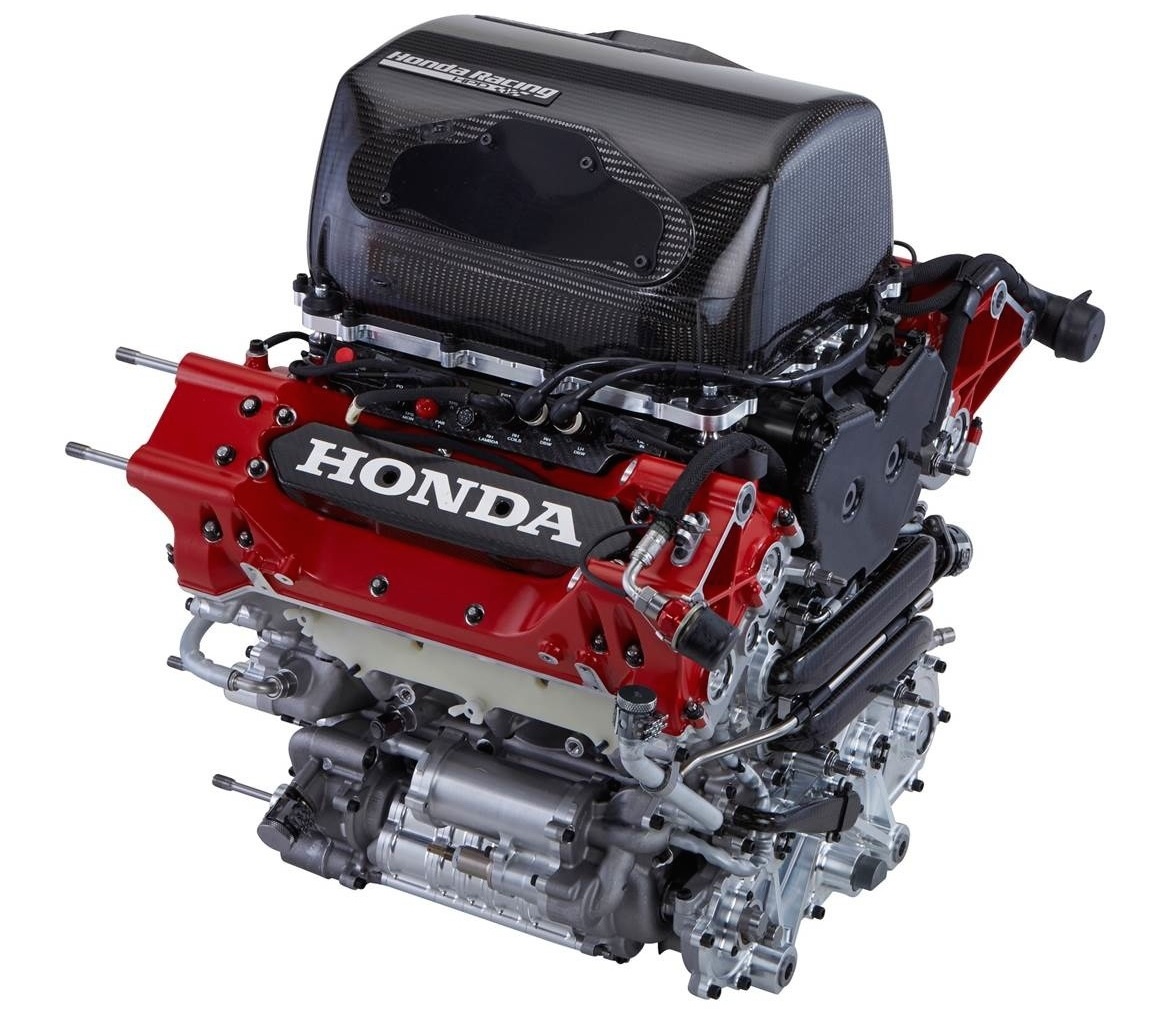Honda Unveils 2014 V6 Twin-turbo IndyCar Engine
 |
| Honda HI14RTT engine |
In anticipation of the season opening race at St. Petersburg this weekend, Honda Performance Development (HPD) is showing off its new HI14RTT engine that will power seven teams in this year’s Verizon IndyCar series.
Although not fully dressed with the required twin Borg Warner turbochargers, the official photo of the 2.2-liter V6 does reveal major changes to the air box to accommodate twin inlets when compared to the previous HI12R. The electrical wiring is also different as are the intake manifold and various plumbing lines.
While both Honda and Chevrolet, which supplies engines to IndyCar teams through its British partner Ilmor (follow this link for more info), were allowed to make designated designed for homologation this year, the overall package remains quite similar to the previous generation — with the big exception being the turbos.
Honda originally designed its IndyCar engine under the new rules for the 2012 season using a single Borg Warner EFR-9180 turbo mounted in the bellhousing — a configuration that served Honda well when it supplied engines to CART teams. Chevy and Lotus, however, opted for twin turbos. IndyCar had a tough time maintaining a sense of fairness in balancing the turbo sizes and other factors for the last two season, so officials mandated that all engines have twin turbos. And not to make it easy on Chevy (Lotus has since dropped out of the series), IndyCar told teams to use bigger turbos starting in 2014. Previously, Chevy was restricted to the Borg Warner EFR-6758 turbo.
Now teams can use the EFR-7163 turbo. Breaking down the code, that means the turbo has a 71mm compressor wheel and a 63mm turbine (you can easily decode the other turbos using the same formula). Exhaust outlet locations are mandated by the rules.
 |
| Honda HI14RTT engine |
"We've been encouraged by the performance of the new Honda Indy V6 and the improvements we’ve made during the off-season," says Mark Crawford, HPD’s project leader for the IndyCar program.
Chevy won the Manufacturer’s championship the past two years while the two engine suppliers have split wins at the Indy 500. A new points system for 2014 will reward teams for finishing in the top-5 and completing the durability requirements that were boosted from 2,000 to 2,500 miles per engine.
HPD doesn’t offer much information about the 248-pound HI14RTT, other than to say it’s 2.2 liters and is a DOHC, 4-valve-per-cylinder configuration. The block is fully machined aluminum with liners, and the cylinder banks appear to be about 75-degrees apart. The steel crank is supported by four main caps but no word on whether that crank is an offset-pin or straight-pin design. We do know forged alloy pistons ride on steel connecting rods. All teams use a McLaren ECU. Direct injection is allowed, but since teams are required to use E85 fuel, HPD also adds port injectors to feed the cylinders to hit the rev limit of 12,000 rpm. Other engine features include a dry-sump oil system and single mechanical water pump. Official horsepower numbers are never revealed, but insiders say that 750 horsepower is quite possible with the road-race setup that allows the highest boost levels.
